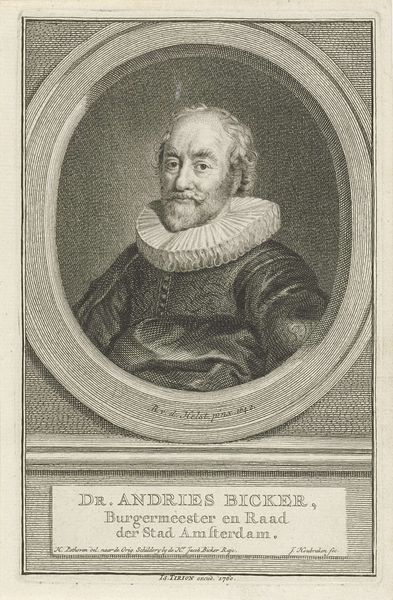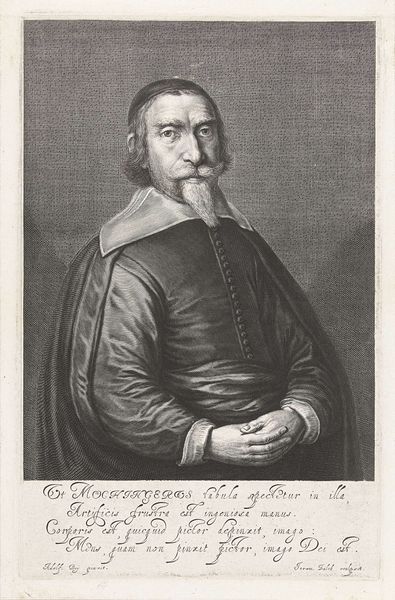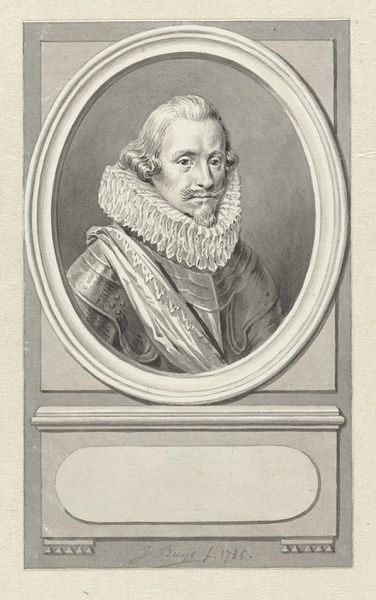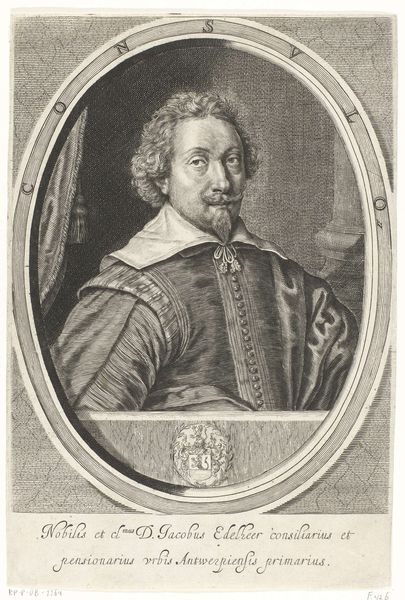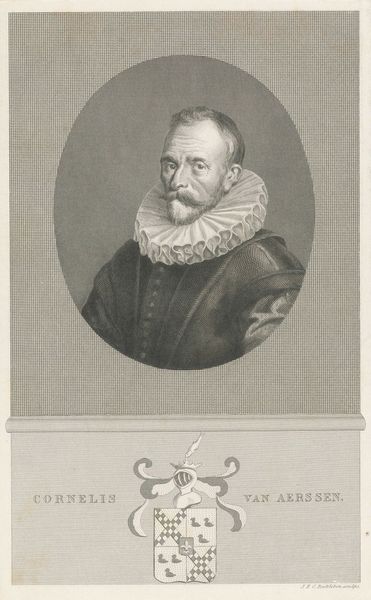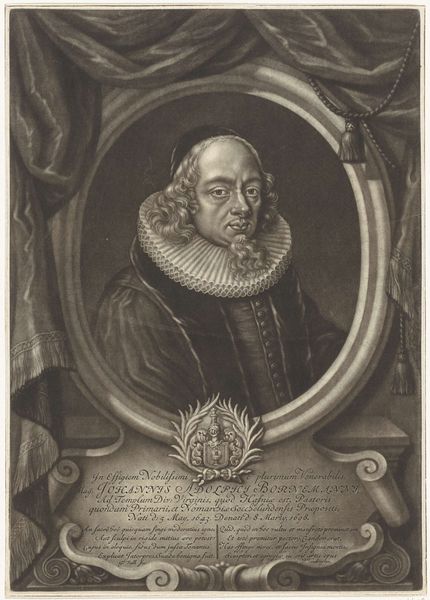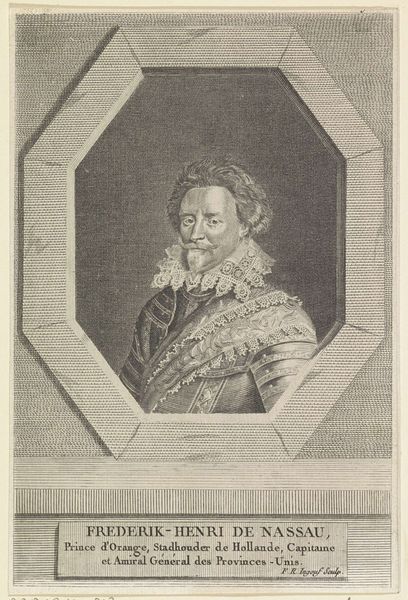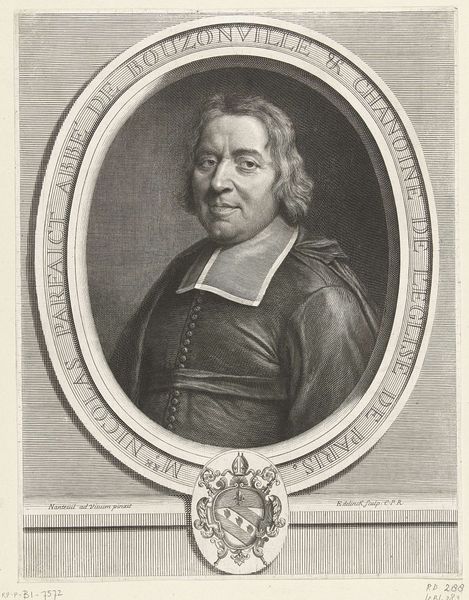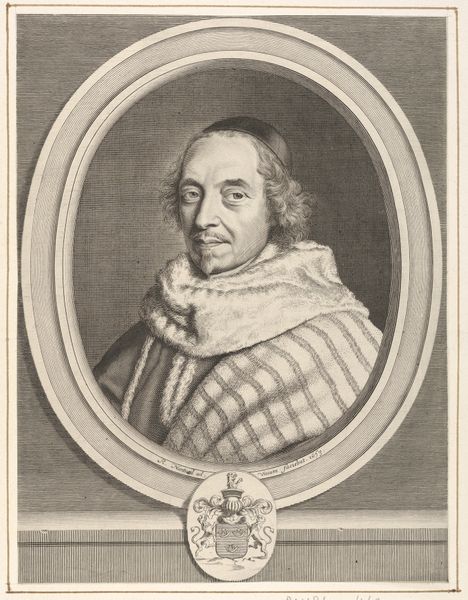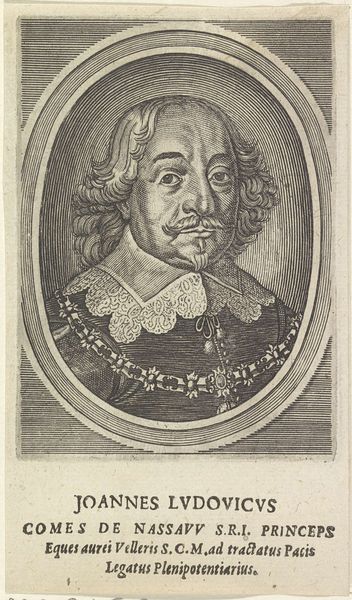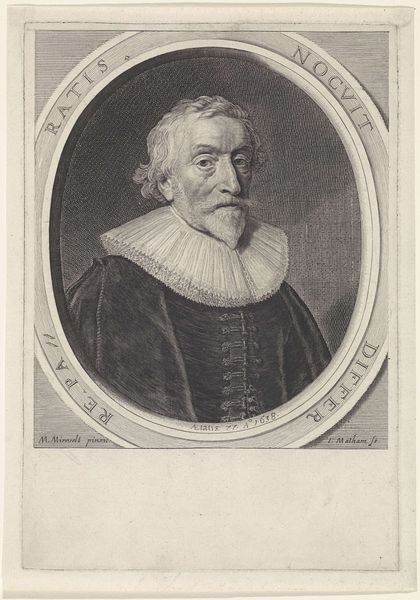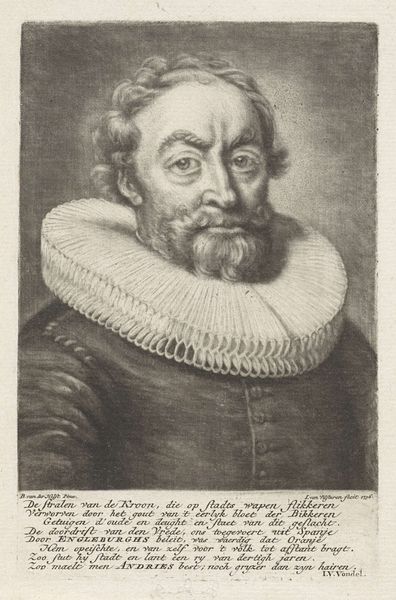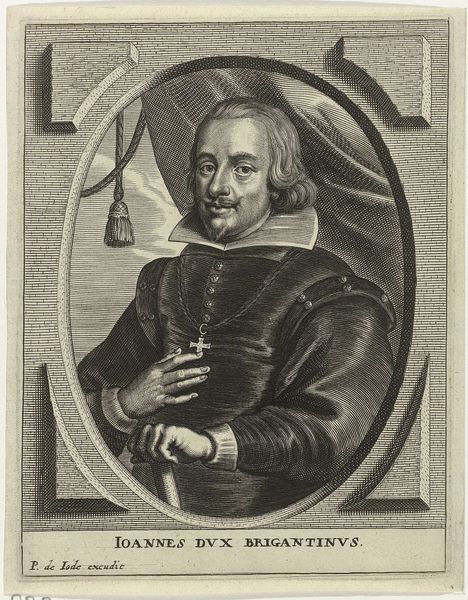
Dimensions: height 227 mm, width 146 mm
Copyright: Rijks Museum: Open Domain
Curator: Standing before us is "Portret van Andries Bicker," an engraving completed between 1861 and 1863 by Jan Frederik Christiaan Reckleben. It’s currently held here at the Rijksmuseum. Editor: It’s quite striking, really. There's a gravity to his gaze, a somber air that the artist captures beautifully with the engraving. The detail, especially in his ruffled collar and facial hair, is extraordinary. Curator: Absolutely. This portrait adheres to the stylistic conventions of 19th-century academic art, heavily influenced by Neoclassicism, as it aimed to revive classical artistic values of earlier eras, evoking ideals of leadership, nobility, and civic duty. We must remember that images such as this helped cement power structures. Editor: Power is definitely the right word. Portraits like these weren't just about capturing a likeness. They served to construct and project authority. Who was Andries Bicker within the larger Dutch social and political structure? Curator: Andries Bicker was an influential Amsterdam merchant and statesman during the Dutch Golden Age. As a member of the Bicker family, he was a leading figure in the city's oligarchy. This print reflects his significant status. His identity and place are underlined further through the inclusion of his family's coat-of-arms displayed prominently beneath his portrait. Editor: Knowing that contextualizes everything. Now, his serious expression feels less about individual personality and more about upholding an image appropriate to his position in Dutch society. The clean, almost severe lines of the engraving certainly add to that sense of formal representation. It underscores the patriarchy and exclusionary power structures that individuals like Andries Bicker benefited from and actively reinforced. Curator: Exactly, and that gets at the core of the political nature of portraiture. This isn't just about representing a person. It's about affirming a certain order, a certain distribution of power. Works like this one speak volumes about how artistic representations reinforce dominant narratives within historical power dynamics. Editor: It provides such insight into the relationship between art, power, and historical context. Curator: It’s true. A valuable image to consider when navigating and exploring social issues in historical art!
Comments
No comments
Be the first to comment and join the conversation on the ultimate creative platform.
